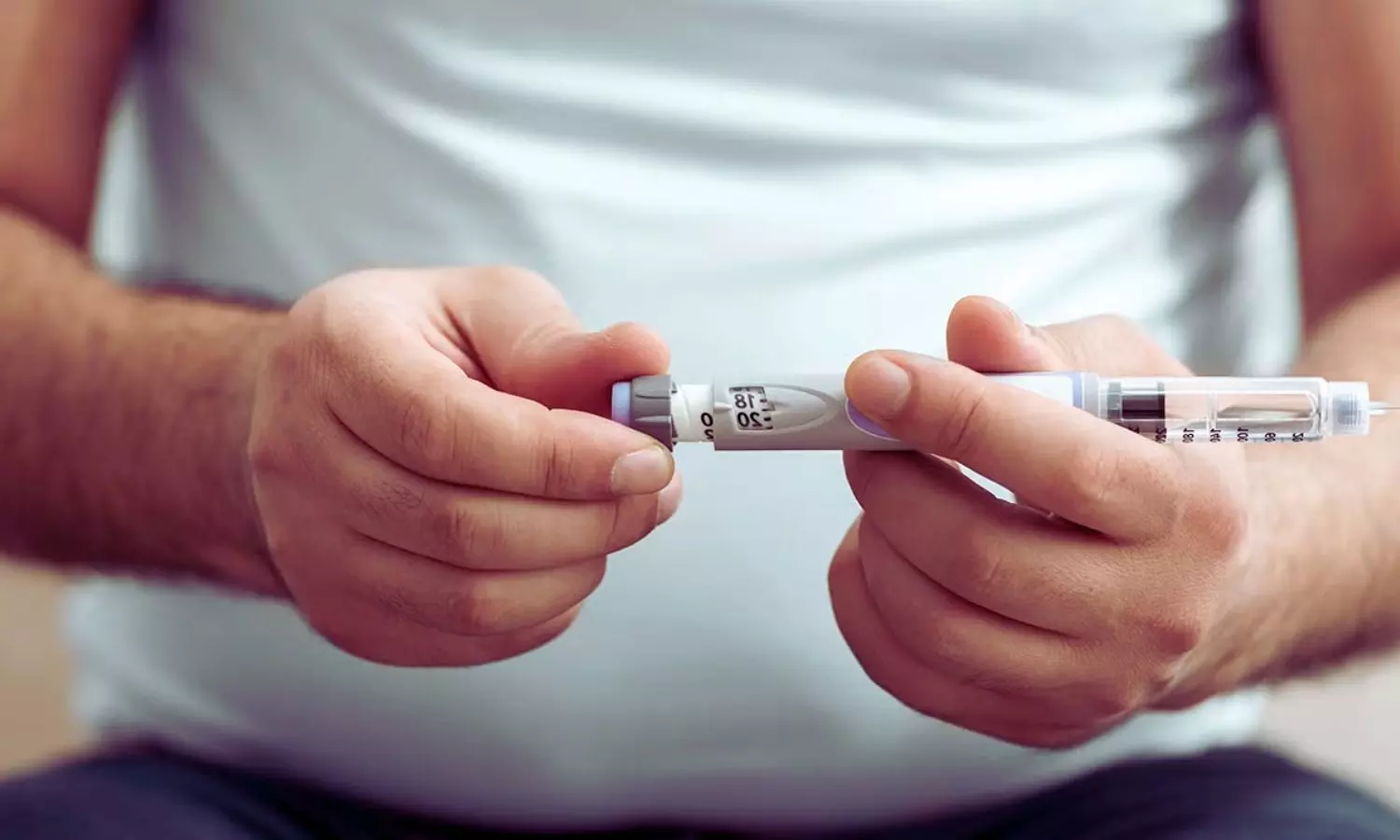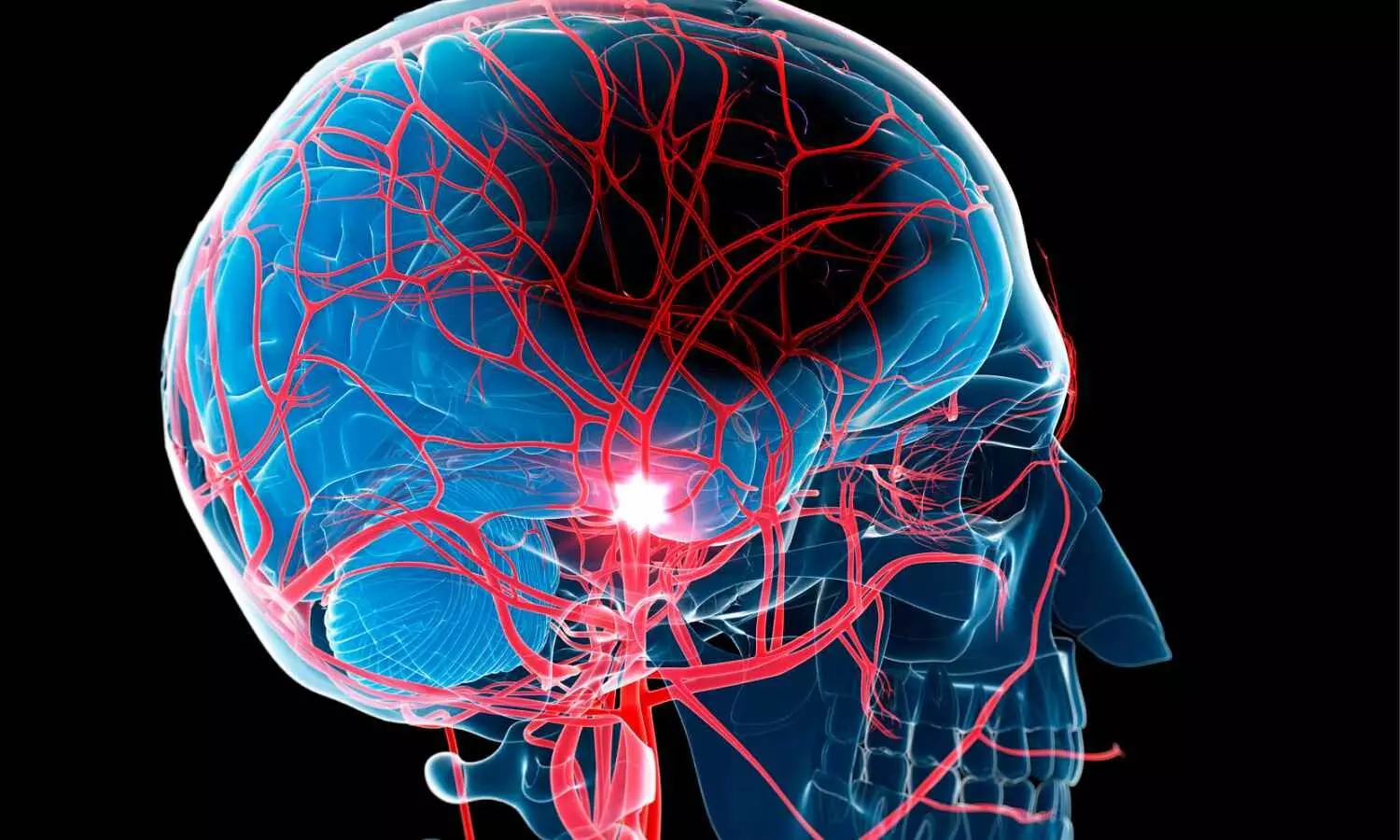Survey reveals most Americans believe plasma donation saves lives, yet few have donated
Powered by WPeMatico
Powered by WPeMatico
Powered by WPeMatico
Powered by WPeMatico
Powered by WPeMatico
Powered by WPeMatico
Powered by WPeMatico
Powered by WPeMatico

Taiwan: A recent study has found that the use of glucagon-like peptide-1 receptor agonists (GLP-1 RAs) in patients with type 2 diabetes delivers body mass index (BMI)-dependent cardiovascular benefits and consistent kidney protection.
Powered by WPeMatico

Influenza is much more than just a nasty cold – it is one of the most dangerous infectious diseases worldwide, claiming around half a million lives every year.
What makes it particularly insidious is that flu viruses are contagious even before the first symptoms appear. Despite this threat, the diagnostic options available to date are far from ideal. They are often expensive, complicated to use and simply unavailable in many poorer regions of the world.
A research team led by Professor Lorenz Meinel from the University of Würzburg has developed the technology behind a new self-test for influenza, recently published in ACS Central Science.
The new principle could make flu diagnosis quicker, cheaper and easier in the future. Anyone could use it anytime, anywhere, for example in the form of chewing gum or a lollipop that reacts to flu viruses in the saliva of infected people and releases a flavouring. In the mouths of non-infected individuals, however, nothing would happen. This would allow those affected to detect an infection within minutes – without the need for a laboratory, electricity or medical personnel.
‘This strategy opens up new possibilities for the early detection and control of influenza worldwide,’ says Lorenz Meinel, who heads the Chair of Drug Formulation and Delivery at the University of Würzburg.
The new diagnostic tool consists of the sensor molecule thymol – a natural substance found in thyme, among other things – and a virus-specific sugar building block. When it comes into contact with active influenza viruses, these release the thymol, creating a clearly recognisable taste in the mouth.
‘Instead of relying on expensive and complicated testing procedures, we use the natural human sensory system – taste – as a tool for the early detection of infections,’ says Lorenz Meinel.
The principle is flexible: both the flavour carrier and the recognition component can be adapted. For example, the system can be equipped with sweet, bitter or salty flavours – even child-friendly ones. It can also be transferred to different pathogens.
‘For other infections, for example, the virus-specific sugar component could be replaced by a bacteria-specific peptide. The underlying functionality would remain the same,’ explains Lorenz Meinel. The method thus opens up new possibilities for low-threshold diagnostics of viral and bacterial infections – from influenza to future pathogens that are not yet known today.
The researchers are now working on incorporating the sensors into chewing gum or lollipops and making the diagnostic system suitable for mass production. To this end, it is collaborating with FlareOn Biotech GmbH, a start-up founded in 2024 by the University of Würzburg. The development process is expected to take around four years.
The team is convinced that such applications are particularly suitable for critical locations such as schools, nurseries and retirement homes. They could be of crucial importance in containing outbreaks of infection, especially in poorer countries.
Long-term Goal: Tracking the Spread of Influenza in Real Time
The researchers are already thinking further ahead: As soon as an application is available, they would like to ask all users to voluntarily record positive influenza test results using a smartphone app. This data could provide a previously unattainable online overview of the situation, enabling the spread of influenza viruses to be tracked in real time.
Artificial intelligence could then also be used to predict where epidemics or pandemics might develop. This would enable the World Health Organisation, governments, local authorities and even individuals to take precautionary measures at an early stage.
The Federal Ministry of Research, Technology and Space provided financial support for the work as part of the joint project ‘Influ Kau’.
The following were involved:
Dr Heinrich Jehle from the start-up FlareOn Biotech GmbH in Frickenhausen (Esslingen, Baden-Württemberg) contributed to the financing and regulatory advice.
Professors Christian Linz (University Hospital Würzburg, now University Hospital Cologne) and Stephan Hackenberg (University Hospital Würzburg) as well as their teams collected the clinical samples and determined and documented the patients’ state of health.
Professor Jürgen Seibel (Institute of Organic Chemistry, University of Würzburg) and his doctoral student Marcel Groß co-developed the synthesis of the sensor molecule.
Professor Carlos A. Guzmán (Head of the Department of Vaccinology and Applied Microbiology at the Helmholtz Centre for Infection Research in Braunschweig, HZI) conducted investigations on influenza virus particles with teams led by Dr Peggy Riese and Dr Stephanie Trittel.
Reference:
Martina Raschig, Marcus Gutmann, Josef Kehrein, Eberhard Heller, Michael Bomblies, Marcel Groß, A Viral Neuraminidase-Specific Sensor for Taste-Based Detection of Influenza, ACS Central Science, DOI: 10.1021/acscentsci.5c01179.
Powered by WPeMatico

Stroke patients evaluated using telemedicine (telestroke) have higher odds of receiving essential treatment, yet it takes them significantly longer to be treated-potentially limiting the benefits, a Michigan Medicine-led study finds.
Researchers evaluated more than 3,000 patients with ischemic stroke, the most common type, who were potentially eligible for treatment with thrombolysis.
The study used data from 42 hospitals in the Paul Coverdell Michigan Stroke Registry, a program funded by the Centers for Disease Control and Prevention that measures, tracks and aims to improve the quality of care for patients with stroke.
Also called clot-busting medication, thrombolysis is highly time sensitive. National stroke guidelines from the American Heart Association recommend thrombolysis treatment within 60 minutes of a patient arriving to the hospital.
Patients seen using telestroke were 1.6 times more likely to receive clot-busting drugs. However, the time it took for telestroke patients to receive treatment after arriving to the hospital, known as “door-to-needle” time — was nearly seven minutes longer than patients evaluated in person.
Telestroke patients had 44% lower odds of being successfully treated within 60 minutes of getting to the hospital.
Results are published in JAMA Network Open.
“Telestroke care has the potential to revolutionize acute stroke treatment by improving access to lifesaving treatment, but our findings highlight clear gaps in the ability to promptly treat these patients after they are evaluated,” said Brian Stamm, M.D., M.Sc., lead author and clinical assistant professor of neurology at University of Michigan Medical School.
“This is a major opportunity for quality improvement to identify unique factors in telestroke systems that contribute to treatment delays.”
Telestroke evaluations happened more often at rural hospitals and health systems without comprehensive stroke centers.
Investigators also evaluated a subgroup of patients who required transfer to another hospital for advanced stroke treatment and found that it took telestroke patients 47 minutes longer to be transferred, compared to stroke patients evaluated in person.
Delays in hospital transfer may limit a patient’s eligibility for endovascular thrombectomy, a minimally invasive surgical procedure to remove a large blood clot causing stroke.
The American Heart Association recommends that potential candidates for endovascular therapy spend fewer than 90 minutes in the initial transferring emergency department (known as the “door-in-door-out time”), and the Joint Commission recommends this time be less than 120 minutes for all stroke patients.
Past U-M research found that nearly three-quarters of stroke patients who require a transfer wait longer than two hours.
The current study suggests these transfers may take even longer for telestroke patients.
“We know that stroke transfer times are a major problem for the entire stroke care system, but our study highlights particular challenges for telestroke patients,” said Deborah Levine, M.D., M.P.H., senior author and professor of internal medicine and neurology at U-M Medical School.
“Several barriers exist for timely transfer to comprehensive stroke centers, including lack of EMS availability and difficulty finding an accepting facility.”
Stroke providers often use the saying, “Time is brain,” to reflect the importance of speedy acute stroke treatment.
The likelihood of neurologic and functional deficits rapidly increases without timely stroke care. Patients experiencing large vessel ischemic strokes lose nearly 2 million neurons each minute.
In 2010, the AHA created the Target: Stroke program to improve national stroke treatment efficiency. A study conducted four years later found that hospitals participating in the program reduced average door-to-needle treatment times from 74 to 59 minutes.
AHA’s Target: Stroke now has a goal of treating 85% of ischemic stroke patients within 60 minutes of hospital arrival.
In the U-M study, only 60% of patients evaluated using telestroke received thrombolysis within the hour.
“Telestroke has markedly increased access to stroke care and is an essential component of stroke systems,” said co-author Mollie McDermott, M.D., M.S., director of the Stroke Division at U-M Health and clinical associate professor of neurology at U-M Medical School.
“Yet, our findings suggest there is considerable room to ‘move the needle’ on timely stroke treatment for patients evaluated by telestroke.”
Reference:
Stamm B, Whitney RT, Royan R, et al. Telestroke and Timely Treatment and Outcomes in Patients With Acute Ischemic Stroke. JAMA Netw Open. 2025;8(9):e2534275. doi:10.1001/jamanetworkopen.2025.34275
Powered by WPeMatico
